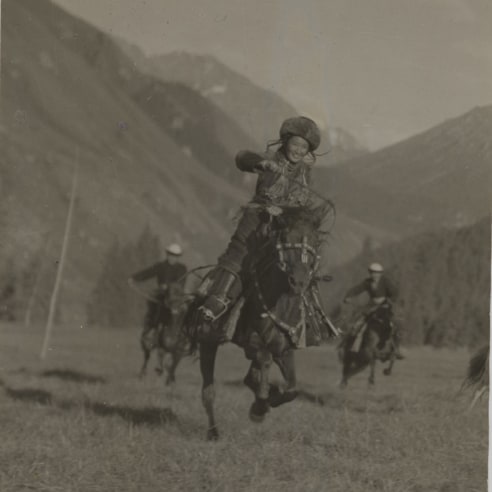
Nailya Alexander Gallery is pleased to announce Turkestan: Orientalism in Soviet Avant-Garde Photography, a unique visual chronicle of the "sovietization" of the ancient Muslim emirates.
In the late 19th century, Russian artists, composers and photographers were attracted to the mysterious Central Asia. After the 1917 October Revolution, the Bolsheviks came to the Orient with a mission to build a new world, to create a model of a socialist society. Soviet photographers, like their predecessors, could not avoid their fascination with the exotic land and its peoples, although their task was to document major historical changes and the colossal engineering projects in the region.
The exhibition showcases some 50 vintage photographs from the 1930s by Max Penson, Arkady Shaikhet, Max Alpert, Mikhail Grachev and Georgy Zelma. A significant part of the exhibition is devoted to photography of Max Penson, who lived in Tashkent.
Sergei Eisenstein observed “There cannot be many masters left who choose a specific terrain for their work, dedicated themselves to it completely and made it an integrated part of their personal destiny... It is, for instance, virtually impossible to speak about the city of Fergana without mentioning the omnipresent Penson who traveled all over Uzbekistan with his camera. His unparalleled photo archives contain material that enables us to trace a period in the republic's history, year by year and page by page.”
Arkady Shaikhet, a father of Soviet photojournalism, covered the construction of the famous TurkSib (Turkestan-Siberian Railroad), a shining achievement of the First Five-Year Plan. Among other photographs, Shaikhet’s “First TurkSib Locomotive” (1930) is featured in the exhibition. The Grand Fergana Canal (dug by 170,000 people in forty-five days) was one of the most remarkable constructions of the USSR as a nation. The gigantic project (1939) recalls the building of the Egyptian pyramids. Reportages by Max Alpert, Max Penson and Mikhail Grachev are most impressive. Photographers with great enthusiasm recorded the modernization of the backward Muslim land: liberation of women, education of children, the irrigation of arid lands for cotton growing, silk production, etc.
Perhaps the "history lesson" of the Red Orient might offer general insights into the problem of modernization of Islamic cultures. It might be interesting today to re-examine the experience of the Soviet colonization of Central Asia (the forced secularization of the region by replacement of Islam with the communist ideology) when the West is facing the challenge of Islamic fundamentalism and the Americans are attempting to introduce democracy to the Middle East.